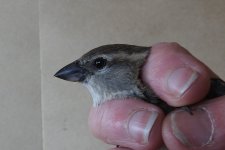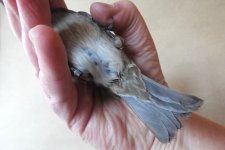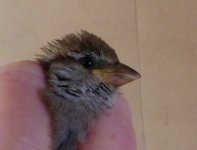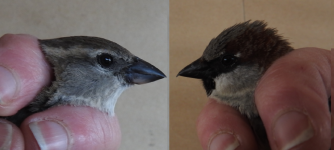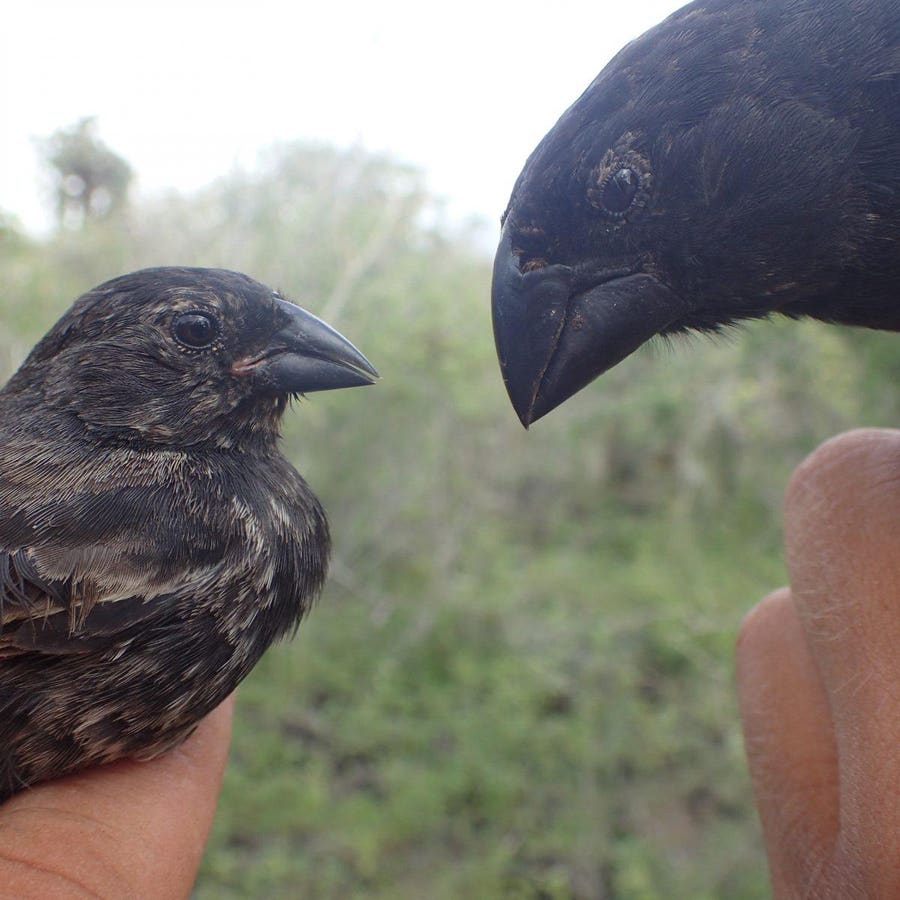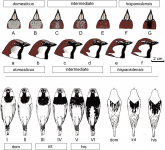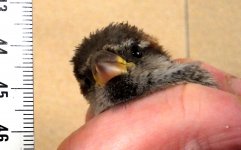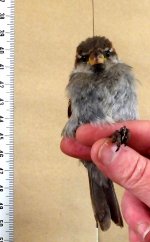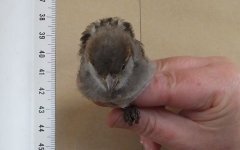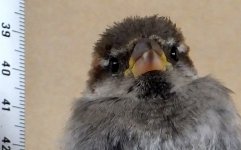Jane Turner
Well-known member
On Apr 25th this year we caught a female Sparrow with a fully developed [in use] brood patch so it was quickly processed. The ringer pointed out that it looked a bit odd - and so I looked and indeed it was - in fact had I not been in NW UK, but in place where Spanish Sparrow was a possibility, it ticked several boxes for that species. Not wanting to hold a bird on eggs any longer than necessary, we took a couple of photographs and measured the bill, which was in the overlap zone at the very top end of House Sp. We let her go and we joked about how easy it would be to overlook a vagrant female Spanish Sparrow and wondered about what the offspring might look like.
Today I found out!
So my question - has anyone seen a House Sparrow with a fore-supercilium like these two birds? The newly fledged juv seems to also have an unusually uniform and warm toned crown. Their bills are pretty impressive too!
Today I found out!
So my question - has anyone seen a House Sparrow with a fore-supercilium like these two birds? The newly fledged juv seems to also have an unusually uniform and warm toned crown. Their bills are pretty impressive too!




